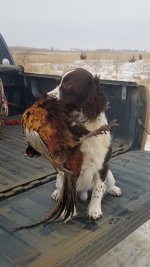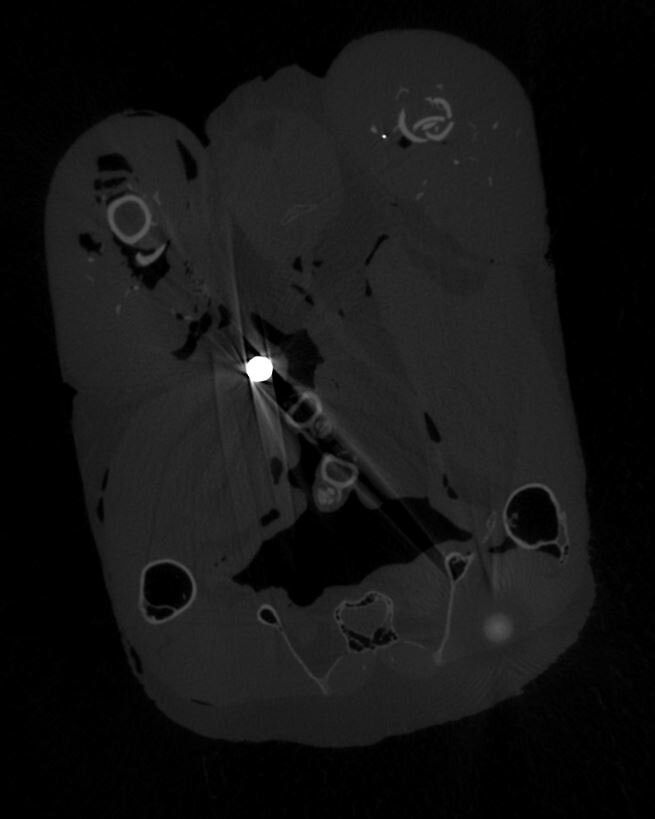A5 Sweet 16
Well-known member
Again I find myself considering pheasant death. This time, it's bismuth shot, specifically.
I've shot a lot of bismuth & commonly find fragmented pellets in birds. To me, that proves the pellet made it to the bird & fragmented on impact. Had it fragmented in the barrel/choke, it would've never made it to the bird.
Do you think any bismuth pellets fragment in the barrel/choke? I think that if they tended to, copper plating (i.e. BOSS) would help prevent it. But I don't know if that's an issue or not. I suspect not.
If we ignore the lubricating properties of copper plating (which could possibly lead to some level of "improved" pattern & penetration) & focus only on minimizing fragmentation, do you think copper plating bismuth improves its performance upon hitting a bird? I really don't know if it requires hitting a bone to fragment a bismuth pellet, or if it can happen simply upon contact with flesh. If a pellet hits a bone, I'd prefer it remain whole, in order to drive through that bone & break it. If copper plating can improve the likelihood of that, then I'm all for it. But then I consider how few pellets actually hit a bone when I shoot a bird. Most, I think, never hit a bone (a big one like a leg or wing bone), & are mostly dealing out destruction of flesh & organs. In the case of organ penetration, I suppose I'm in favor of non-fragmented shot, simply so it has a better chance of making it TO the organ. But how about flesh? I can see a fragmented pellet causing more damage sometimes. And I also believe "shock" (the transfer of kinetic energy) kills & is largely responsible for whether (or how grizzly a death) a bird dies. In that case, I'm at least somewhat in favor of fragmented shot. My theory is that if the entire fragmented pellet remains in the bird, ALL of that pellet's shock energy is transferred to the bird. Whereas if a pellet passes THROUGH the bird, some portion of the pellet's energy travels on with it.
As you see, I'm a little torn between which is better. Whereas both a whole pellet & a fragmented pellet can play a big part in killing a bird, maybe the critical thing is to consider is what puts a bird on the ground the quickest. I think that's breaking bones (wing, skull, neck) and scrambling internal organs. I think on the average, a whole, non-fragmented pellet would be more effective at doing those things.
What do you think?? (This picture of Ace with a very late season rooster should help you consider things.)

I've shot a lot of bismuth & commonly find fragmented pellets in birds. To me, that proves the pellet made it to the bird & fragmented on impact. Had it fragmented in the barrel/choke, it would've never made it to the bird.
Do you think any bismuth pellets fragment in the barrel/choke? I think that if they tended to, copper plating (i.e. BOSS) would help prevent it. But I don't know if that's an issue or not. I suspect not.
If we ignore the lubricating properties of copper plating (which could possibly lead to some level of "improved" pattern & penetration) & focus only on minimizing fragmentation, do you think copper plating bismuth improves its performance upon hitting a bird? I really don't know if it requires hitting a bone to fragment a bismuth pellet, or if it can happen simply upon contact with flesh. If a pellet hits a bone, I'd prefer it remain whole, in order to drive through that bone & break it. If copper plating can improve the likelihood of that, then I'm all for it. But then I consider how few pellets actually hit a bone when I shoot a bird. Most, I think, never hit a bone (a big one like a leg or wing bone), & are mostly dealing out destruction of flesh & organs. In the case of organ penetration, I suppose I'm in favor of non-fragmented shot, simply so it has a better chance of making it TO the organ. But how about flesh? I can see a fragmented pellet causing more damage sometimes. And I also believe "shock" (the transfer of kinetic energy) kills & is largely responsible for whether (or how grizzly a death) a bird dies. In that case, I'm at least somewhat in favor of fragmented shot. My theory is that if the entire fragmented pellet remains in the bird, ALL of that pellet's shock energy is transferred to the bird. Whereas if a pellet passes THROUGH the bird, some portion of the pellet's energy travels on with it.
As you see, I'm a little torn between which is better. Whereas both a whole pellet & a fragmented pellet can play a big part in killing a bird, maybe the critical thing is to consider is what puts a bird on the ground the quickest. I think that's breaking bones (wing, skull, neck) and scrambling internal organs. I think on the average, a whole, non-fragmented pellet would be more effective at doing those things.
What do you think?? (This picture of Ace with a very late season rooster should help you consider things.)


